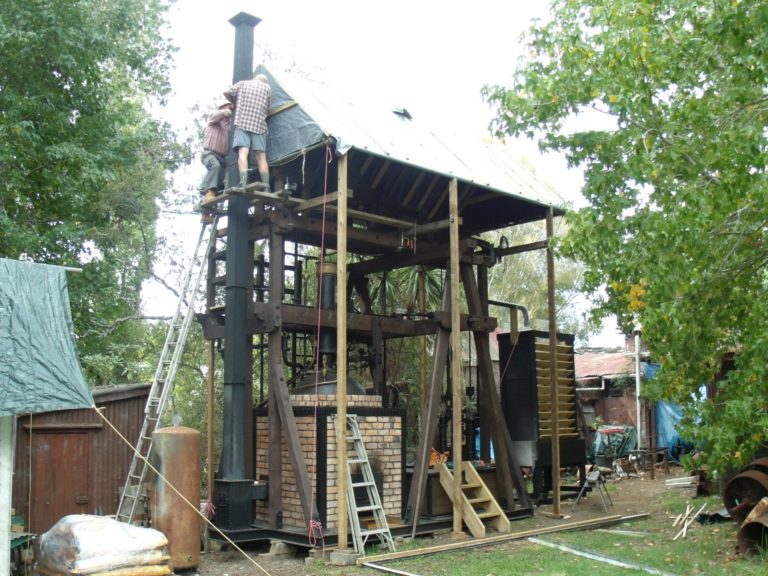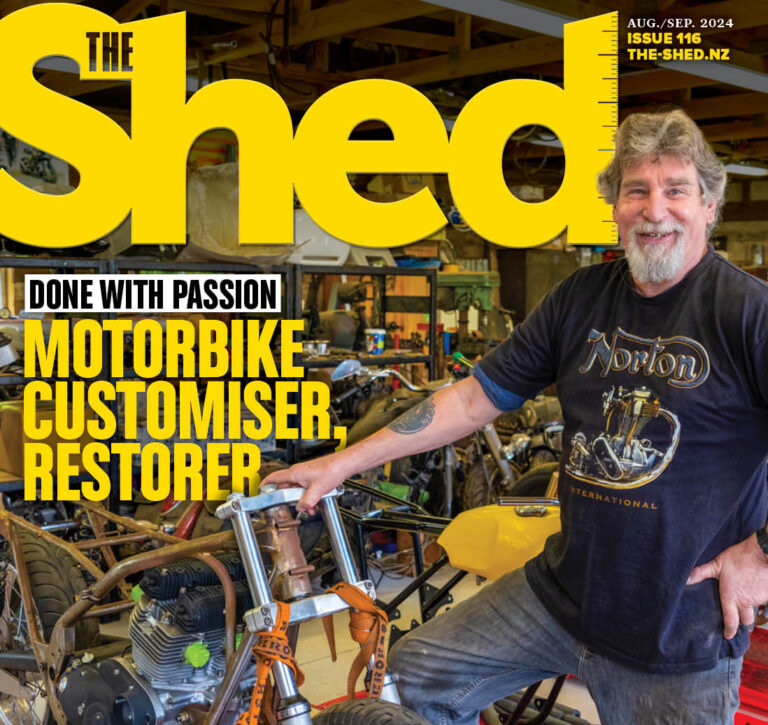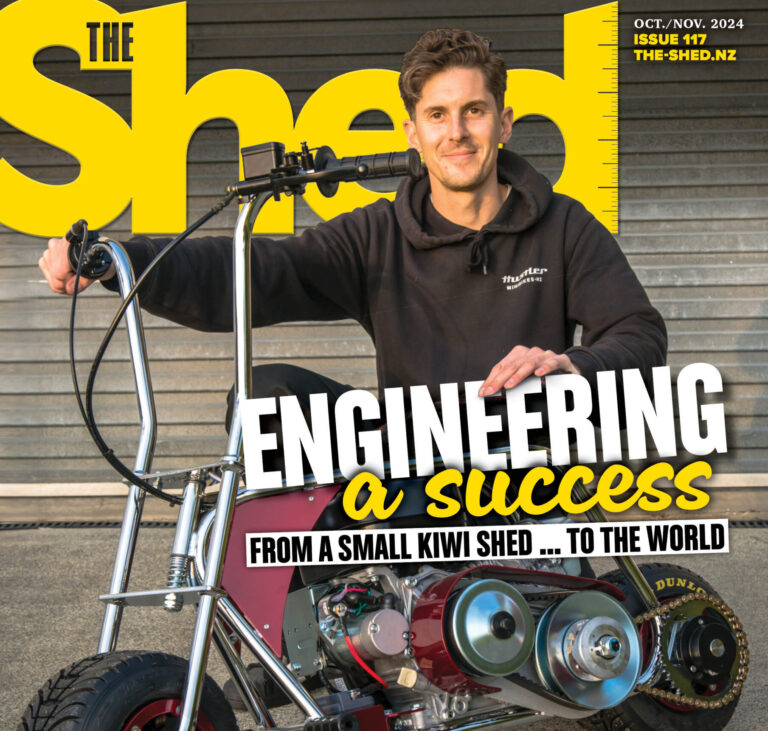Full tilt with Dynamite Dave
Dynamite Dave has always lived his life at full tilt – but this time he’s heading for 300mph.
Dynamite Dave Alexander is a self-taught doer, with an eye for detail, unquestionable discipline, and a passion for motorsports. He’s been making things since he was a nipper, and has never stopped. He was raised on a remote Hawke’s Bay farm, where the shed was his university.
Dave says he “grew up doing it”, working alongside his father Neil, learning how to keep the property and equipment maintained and running. His first job was welding all the farm gates. His next was putting in a box-section chassis for a 1942 Willys Jeep, which served as the farm’s workhorse.
At 18, Dave commenced his first customisation of his Mk ll Zephyr, installing a V8, dual headlights, and Vauxhall tail lights. Since then, he has restored, driven, and raced an impressive list of classic muscle cars, scratch-built stocks, rods, and record-breaking Bonneville salt cars.
Now – at 70-something – this multitasking, project-a-holic is closing in on his latest quest: to break 262mph (422kph) at Bonneville in his shed-built, RB-powered Lakester – a project that has been close to a decade in development.
Dave says, “I guess I could be playing golf or in the pub. But you have to do something to get you out of bed in the morning, to keep the old man out.”
This issue also includes our FREE 2025 The Shed calendar. An essential addition to every workshop wall.
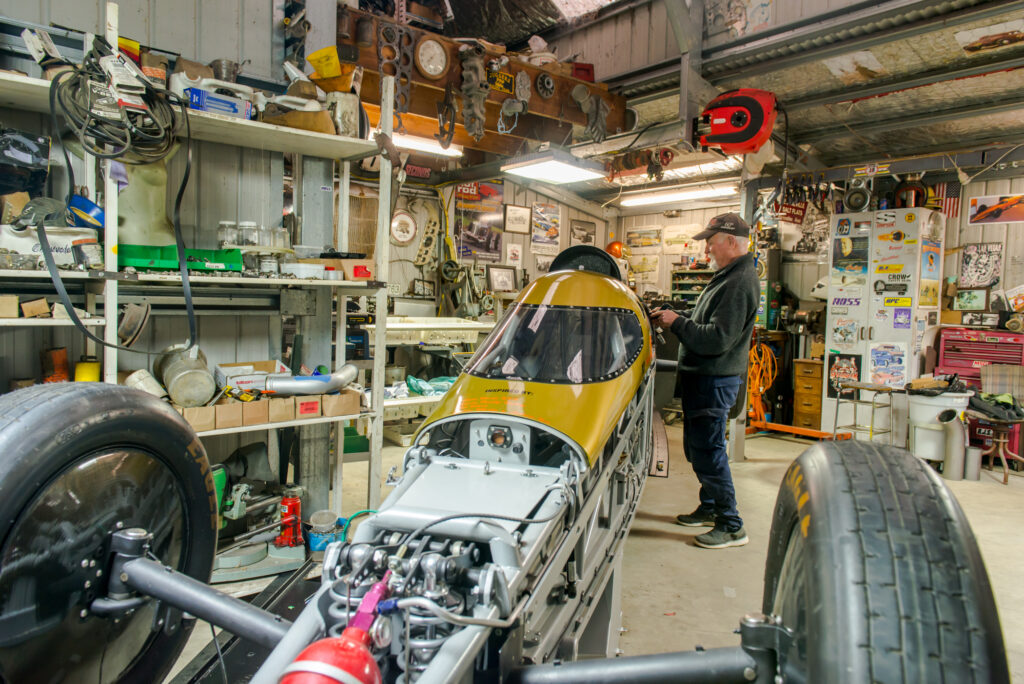
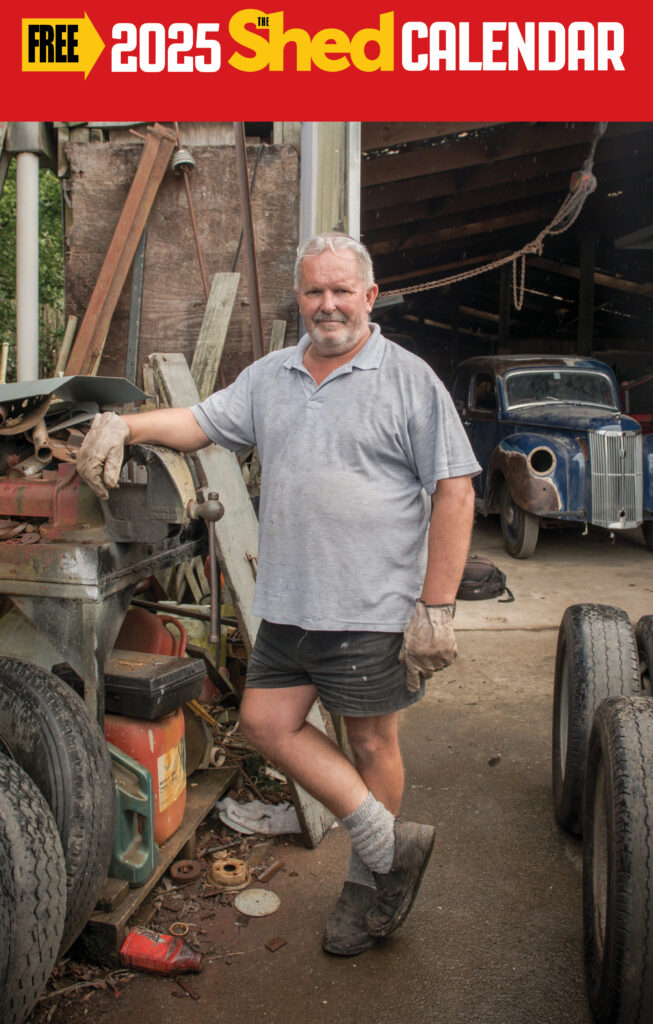
Shed News
Whanganui Men’s Shed SOS
A big move needs big funds
Whanganui Community Men’s Shed Trust Inc. has just two and half years to raise at least $800,000.
This is the estimated amount needed to build and kit out new premises when the trust’s current lease on the Marist Football Club rooms expires. The trust has a memorandum of understanding to lease a property owned by the Whanganui District Council in Handley Street, next to the Whanganui Camera Club, but can’t do much until it has the money, says the secretary of Whanganui Men’s Shed, Gerry Gregan.
A busy weekend in Canterbury
Two popular events lure a multitude of punters
On a weekend at the beginning of October, two notable events took place in Christchurch.
One was the McLeans Island Swap Meet, run by the Canterbury branch of the Vintage Car Club. The other was perhaps less than half the size, but with patrons who were just as enthusiastic.
The other event, taking place on the Saturday and Sunday at Cowles Stadium basketball arena, was the Christchurch Big Model Train Show, featuring model train layouts in various gauges, along with folk selling locomotives, rolling stock, and associated items.

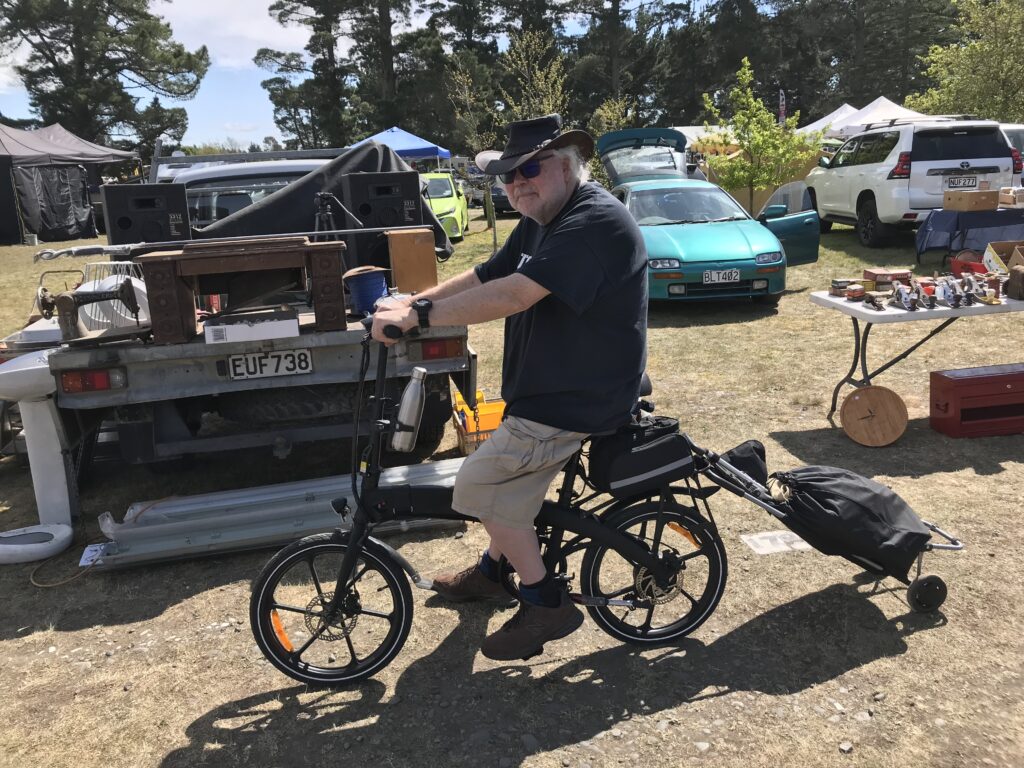
Smokin’ – making a double-barrel smoker
Morphing two drums into a cold smoker
When my friend Evan Wade said he was going to build a smoker from two 200-litre drums, I leapt at the chance to cover it as I had been wanting to cover a Texas-style smoker build for some time.
This isn’t quite a traditional offset smoker like the Texas smoker – although it can be used in the same way, this is primarily a cold smoker. Evan is very partial to meat, fish, and, especially, smoked sausages. He had found the design on the internet and followed more or less the same process as the designer.
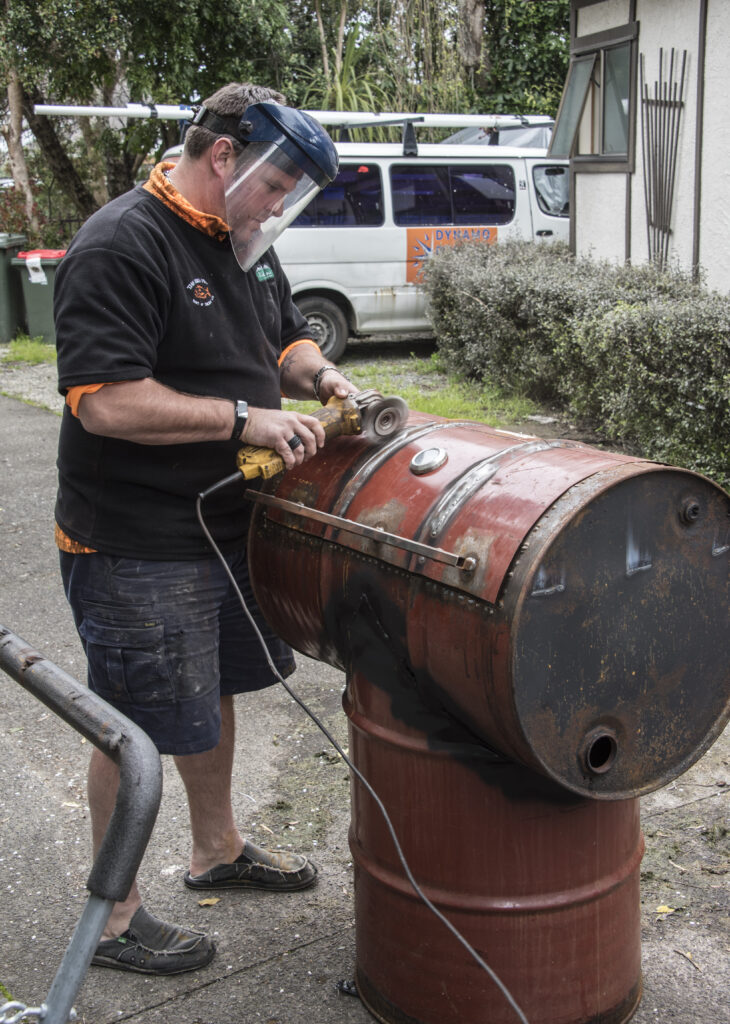
Setting up a workshop – Part 2
A fresh look at the plans provides the opportunity to make changes and improvements.
Since I wrote the first article about setting up a workshop, two things have happened.
The first was my wife suggesting we reorganise the space used by household items so that I can extend my workshop to the full width of the garage. I didn’t see that coming. The second was the decision to buy a new TV.
To start with the second decision, this was significant as it would require a decent media centre to sit on, rather than the black-painted concrete block and scaffolding plank stand we have at the moment. We also decided to make a new coffee table, two new bookshelves, and some lamps – all in the same style as our dining table, which I made some years ago.
This project would require the space, storage, and manoeuvrability described in the previous article, and will become an article in its own right – probably following this series. It was also the justification for buying a table saw to replace the Tanner and a new cross-cut saw to replace the tired existing one.
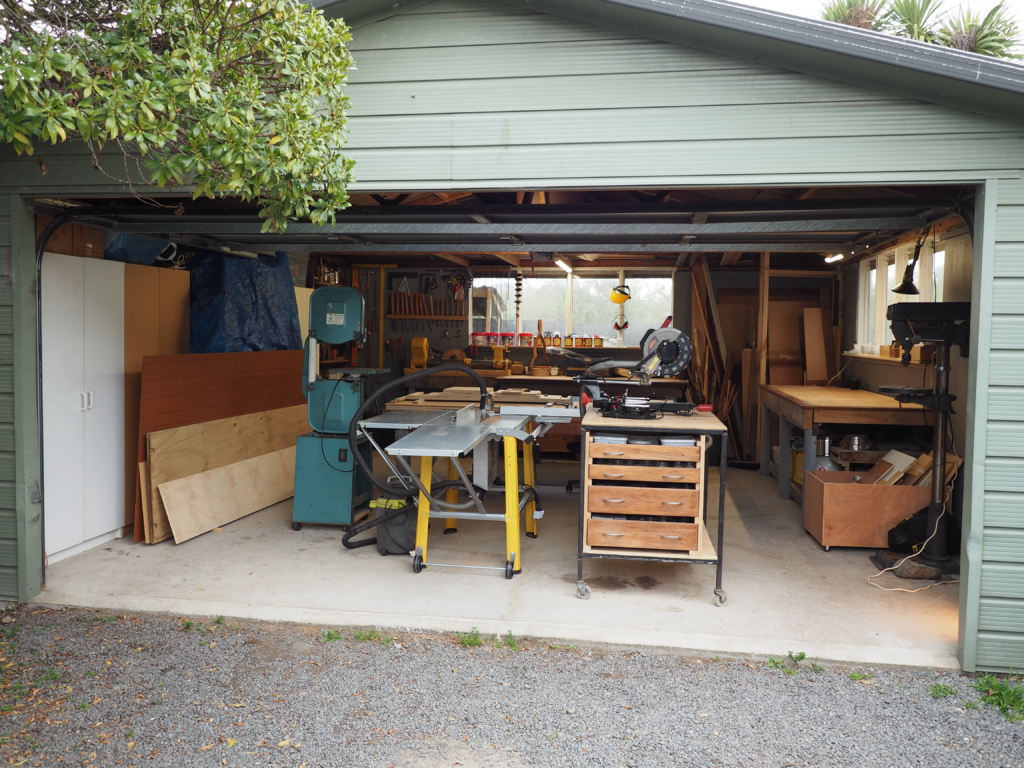
Metallic art
While most people use sheet-metal tools for fabrication, Mike Mason takes things to a whole new level by using a bead roller to create custom works of art.
Hamiltonian Mike Mason is a rarity these days, a true craftsman who can create almost anything out of sheet metal. He spends his days in a hot rod and restoration shop, fabricating whatever is required, but after hours he turns his hand to using his expertise to create artwork.
Asked about the transition from building cars to producing works of art, he tells us, “It all started from buying my first bead roller from Machineryhouse in Auckland. I had done some art as birthday presents and that kind of stuff, but it evolved into wanting to do it at home. That’s when I bought the machine and started up the Instagram page metallicartnz.”
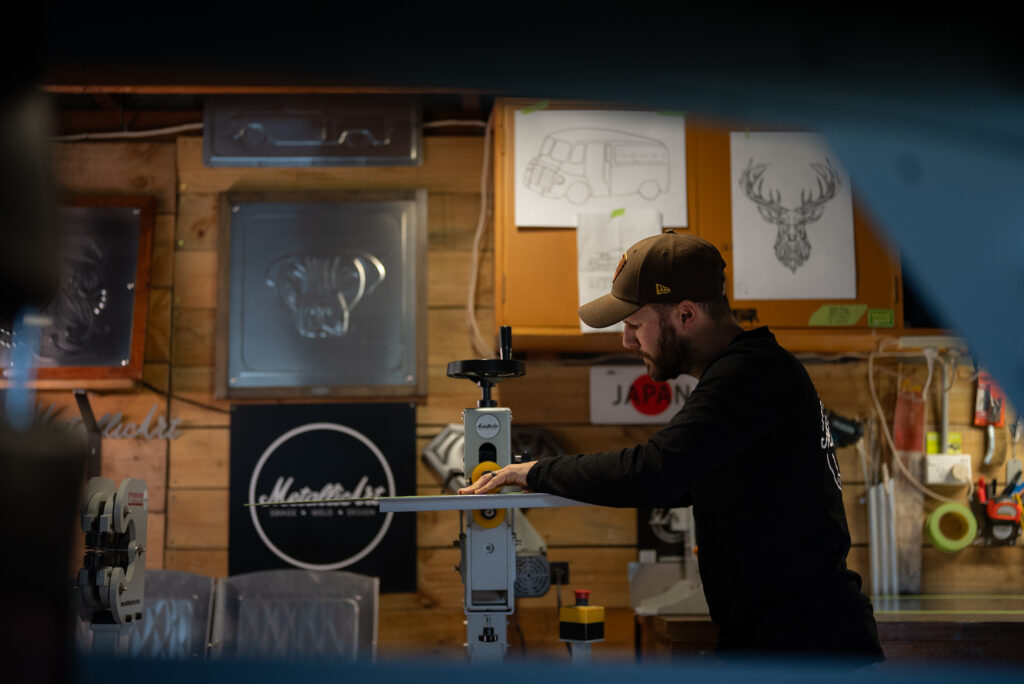
Introduction to electronic music – part 2
The fundamental element of music: the waveforms and how we can manipulate them.
In this second part of “Introduction to Electronic Music”, I will try to introduce the fundamental element of music – and, in general, any sound: the waveforms and how we can manipulate them.
Waveform maths covers a wide range of physics and applies not only to sounds but also to light, gases, fluids, and more.
To make it easy to understand, we will explore the aspects specifically related to electronic music, with a practical approach. What is really interesting about electronic music is how waveforms are created with electronic circuits – whether digital or analogue – and how these sounds (which can be any kind of audible sound, not only notes) can be changed.
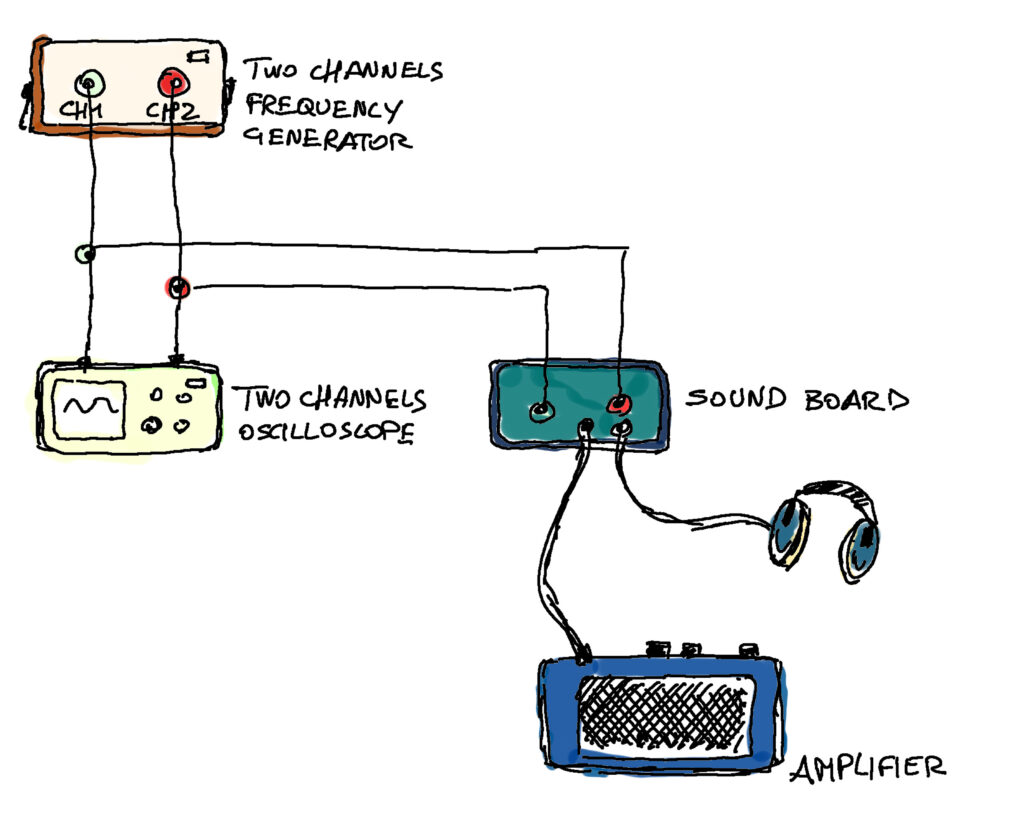
1952 AJS motorbike restoration
From rust to rrroarrr – part 1
After storing his bike for 50 years, Paul has begun to restore it. He doesn’t want his bike to look flashy and new; he just wants it to run well and look the part.
I’ve had the motorbike – an AJS 500cc single of about 1952 production – in storage and in bits for about 50 years.
Calling it an AJS 500 is a bit misleading, as the engine number on the crankcase is for a 1953 Matchless 350 (same manufacturer – AMC, England). Other parts are also mismatched; it’s a bitser.
So, the most I can say for the reassembly is that I want the machine to be reasonably tidy, run well, and, at a superficial glance, look the part. Spending big on authentic parts and professional chrome plating would have to be avoided as much as possible.
Hence this series of articles on how I have managed to develop some quite good electroplating methods (I think) for the parts that are meant to be shiny, plus how I fixed other bits such as cooling fins, wheels, seat, electricals, and so on.
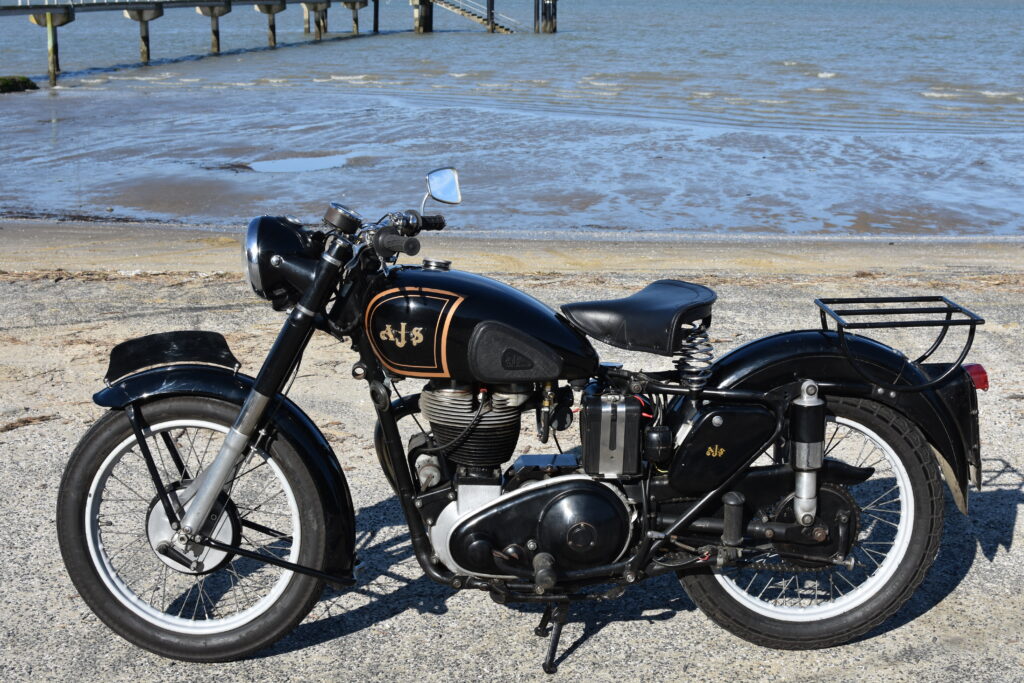
The MOTAT Chronicles 2
The rail volunteers
Meet Rick Schreuder – firefighter, surf lifesaver, railway restorer.
Rick Schreuder gets around. Living in Waiuku, 60km south of Auckland, he does shifts as a surf lifesaver at Karioitahi Surf Club, works as a firefighter at Manurewa, and for the past eight or nine years has been a frequent volunteer at the railway workshop at MOTAT in Western Springs. If it was not for Rick’s Suzuki Z650 motorbike, he would spend half of his life in a car.
Rick was born and spent the first 11 years of his life in rural Holland. He still speaks the language fluently, which, as we will see, sometimes comes in very handy. His other great asset from MOTAT’s point of view is his training as a mechanical engineer, qualifying as a designer and skilled at using CAD software.
“I’ve always liked to be hands-on. During my degree I had to do the practical so a lot of it was spent with engineering firms machining and welding, all that stuff,” he says.
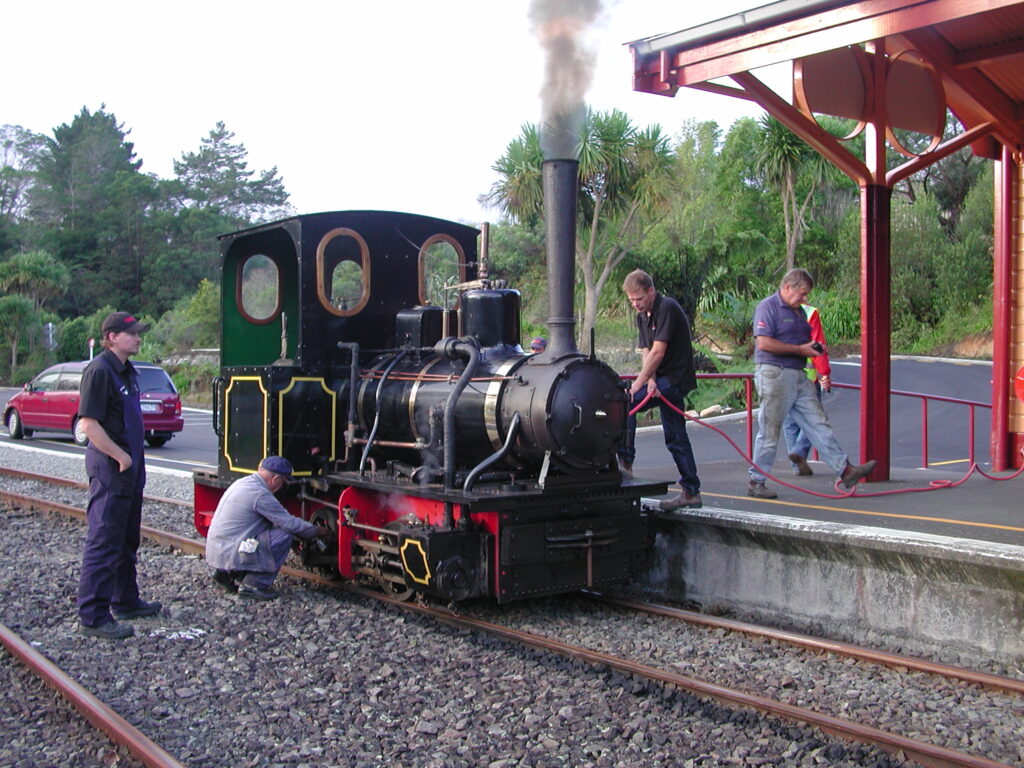
The Shed shrink
The three wise men
The time of year when there’s magic in the air.
It was a balmy Christmas Eve; from memory, it was 1983. It started off as any normal evening before the big day: wrapping presents and placing them around the tree. My final job was in the shed.
With the family tucked up in bed asleep, I crept downstairs to attend to what I thought would be an easy assembly of parts. I had the roller door halfway up and the clock on the wall read 12.45 am. Inside the large box in front of me was a boy’s bicycle. My task was to put it together, to bring delight to a young boy on Christmas morning.
I opened the box and tugged at the little red bike until the plastic and polystyrene gave it up. The shiny two-wheeler had travelled all the way from the Raleigh factory in the north of England, and I expected it to arrive with an instruction manual and tools to assemble it. That was a big mistake.

Arduino Basics 102
Arduino 102: input
Inputs – what they are and what you need to understand about them.
Hopefully, this article will help your understanding of the inputs on an Arduino (and other microcontrollers) and what you need to be aware of when using them in sketches. I’ll show how you can detect and respond to multiple inputs and reveal one method of increasing the input number.
An input is when the microcontroller receives information – and it can be a digital (1/HIGH or O/LOW) change of state, analogue (0–5v), or a data stream.
Regardless of the type, the microcontroller does something with it either immediately or later; it would be a waste otherwise.

Building imitation cannons
A brace of cannon
Neville Watkinson’s project – to build a replica cannon and gun carriage – involved not only creating his own blueprints but also delving into the history of 18th-century armament manufacture.
A generation ago, in cities in the south of New Zealand’s South Island, very large Edwardian houses, formerly home to bank managers or successful doctors, fell out of favour.
When he was first married, Neville Watkinson and his wife owned such a house, a mansion really, with several very large reception rooms, window, and door furniture imported from America, and a truly imposing front entrance: wide, curving steps led to a deep porch and a tall and broad door flanked by stained glass panels.
By chance, Neville saw an American magazine whose cover illustration was of just such an entranceway, except that a ship’s cannon was positioned on either side of the doorway. An article inside the magazine explained how the imitation guns and their carriages could be made in wood.
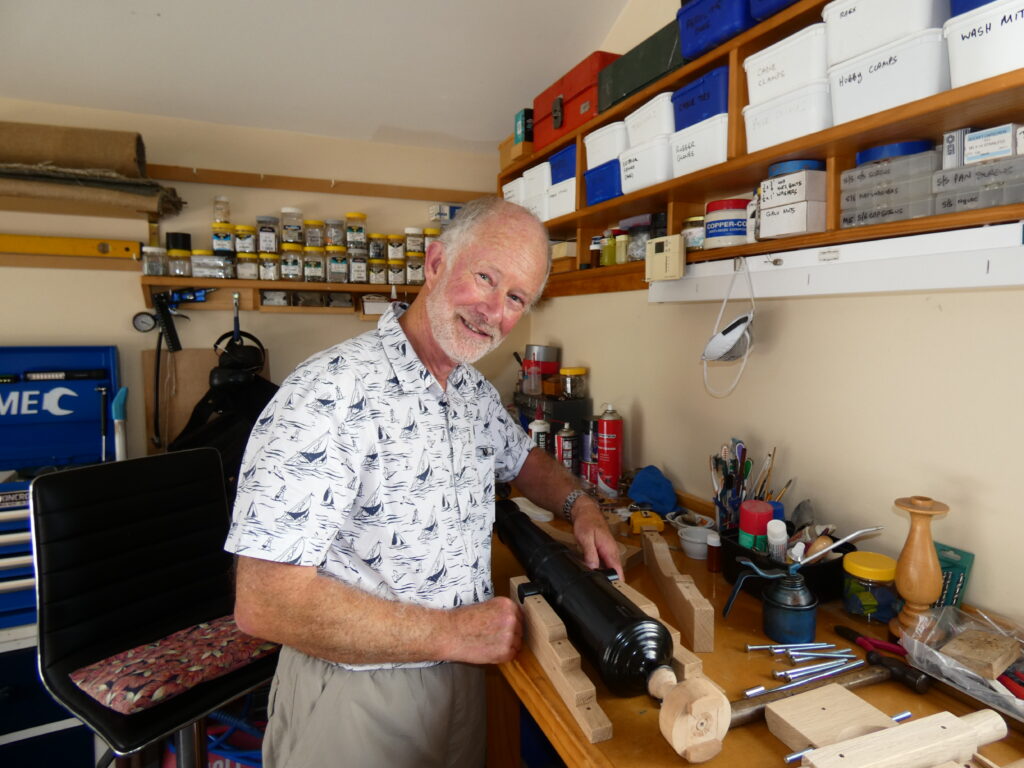
Off the grid
Looking forward and looking back
A taste of the past – facilitated by two timely and fortuitous recollections – helps to balance Murray’s concerns about the future.
Readers will know by now that I love nothing more than detective work. Recently I’ve been indulging in two such sleuthings; a happy delve reducing the frustration of a more serious one.
The happy one is a significant piece of New Zealand maritime history that fell into my lap by accident. The serious one is off-the-grid – or is that on-the-grid? – related; let’s just say it has been a yin-yang, bittersweet few weeks, causing much thought about thinking in Systems and about whether we can learn from history.
I walked into the auctioneers, as I do weekly. Many ship models this time; presumably an aficionado had died, or shifted/downsized. Some were museum-quality shipyard-produced half-models, and one at least was about to sell for thousands.
A big (1.4 metres long), damaged, and slightly amateur model caught my eye. “Three-masted; steamship; naval; ugly-as; late 1800s?” were my thoughts as I edged closer.
The hand-printed nameplate read Amokura. I mentally flashed back to a sunny afternoon spent cavorting in her remains in Kenepuru.
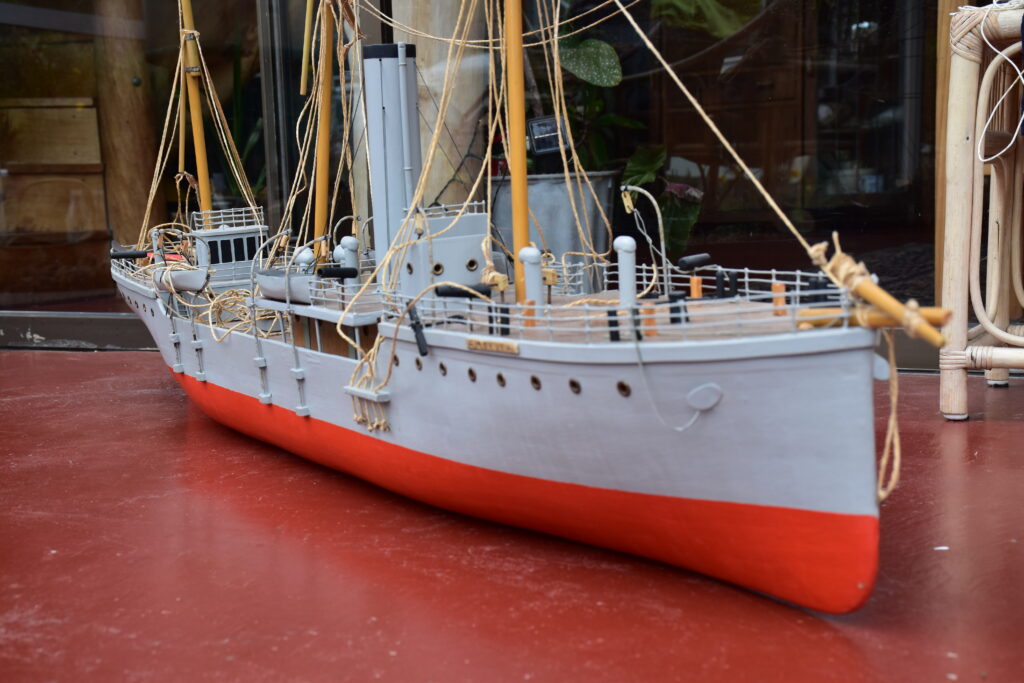
My shed
A Morrie haven
It’s not whether you actually own your shed that’s important; it’s the treasures it contains.
Erick Akeley is in a rather tricky position. He doesn’t own a house but he does own five Morris Minors.
Erick shares a rented house in Christchurch that has garaging for only his 1957 ute; the other four Minors he keeps in a rented farm shed on the outskirts of the city.
Over the past couple of decades, Erick has rented various spaces around town for working on his cars. He approached a farmer after spotting an empty building on the farmer’s land. The farmer said that the building wasn’t available, but he had another that was. This is a long, narrow, low-ceilinged, much-modified construction, of no obvious agricultural purpose, at the end of a long drive. Immediately adjacent are sunlit fields of long grass, with a handful of sheep.
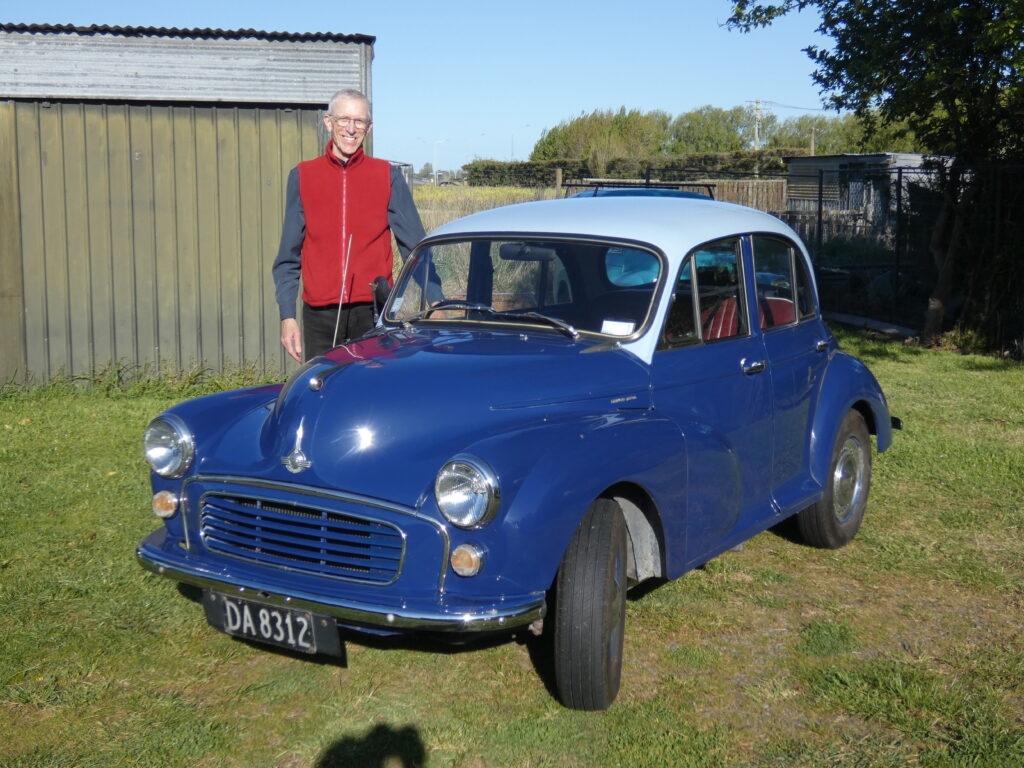
Back o’ The Shed
Intimations of Im-mortality
The miracle drug that isn’t – but it’s not all bad news.
I’ve just had one of those birthdays that doesn’t end in a 0 or a 5 but nevertheless gives you a bit of a chill that something is coming to an end. I am entering the ‘end stage’ of life – not in the dramatic sense, I hasten to add.
Relax, dear reader – I could feel your shock then; I am merely being philosophical. I am transitioning out of middle age. I expect a few more robust years ahead; indeed, I was heartened to read that, among the pills and potions that sustain me, I have one that apparently reverses ageing. I have to report that it doesn’t seem to be working quite as well as the marketing would suggest.


